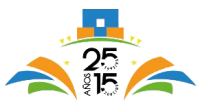Screening for refractive error in Kenya Schools with the QuickSee Handheld Autorefractor

| AUTHORS | |
| JOURNAL | Investigative Ophthalmology & Visual Science June 2020, Vol.61, (ARVO 2020) |
|
Purpose : Although cycloplegic refraction is the gold standard for children screening, it poses significant implementation challenges when the screening is performed in schools (e.g. side effects of cycloplegia). This study aims to evaluate the performance of the QuickSee (QS) for diagnosing refractive error in children under non-cycloplegic conditions and to determine the optimal referral threshold for the device.
Methods : A total of 250 children from 2 schools (one rural, one urban) were refracted onsite by technicians with the QS and by an experienced optometrist using non-cycloplegic autorefraction plus manifest refraction (MR). Children requiring correction or further examination were identified based on the results of the MR procedure. We evaluated the performance of the QS by comparing the agreement between the QS and MR using a Bland-Altman analysis and by determining the number of patients in which the difference between refractions was within a 0.5 diopter threshold. Based on the MR results of the referred patients, the referral criteria for the QS were developed to optimize for sensitivity and specificity in this kind of screening protocol. Results : 248 out of 250 patients were successfully measured with the QS and included in the analysis (mean age 16 ± 5 yrs, ametropia range -7.75 to +0.5D spherical equivalent as determined by MR). Average differences and limits of agreement (± 2 SD) between MR and QS were -0.35 ± 1.43 D, -0.06 ± 0.46 D and 0.04 ± 0.31 D for Spherical equivalent (M), and the cartesian (J0) and oblique (J45) refraction components, respectively. The measurements provided by the QS agreed within 0.5 D of the MR in 80.1% (M), 95.6% (J0) and 97.8% (J45) of the cases. A total 44 subjects were determined to require referral or refractive correction by the MR procedure. The QuickSee referral criteria which best aligned with the MR referral results was |Sphere|≥ 1 D, |Cylinder|≥ 0.5 D and Spherical or Cylindrical anisometropia > 1.5 D. Using these criteria, sensitivity and specificity were found to be 87.5 % and 71 %, respectively. Conclusions : The agreement between the QS and the non-cycloplegic MR procedure indicated high correlation between both refraction methods. After selecting the suggested referral criteria, the device was able to provide high sensitivity and specificity to predict the results of the non-cycloplegic screening procedure.
|
|
| LINK | here |



